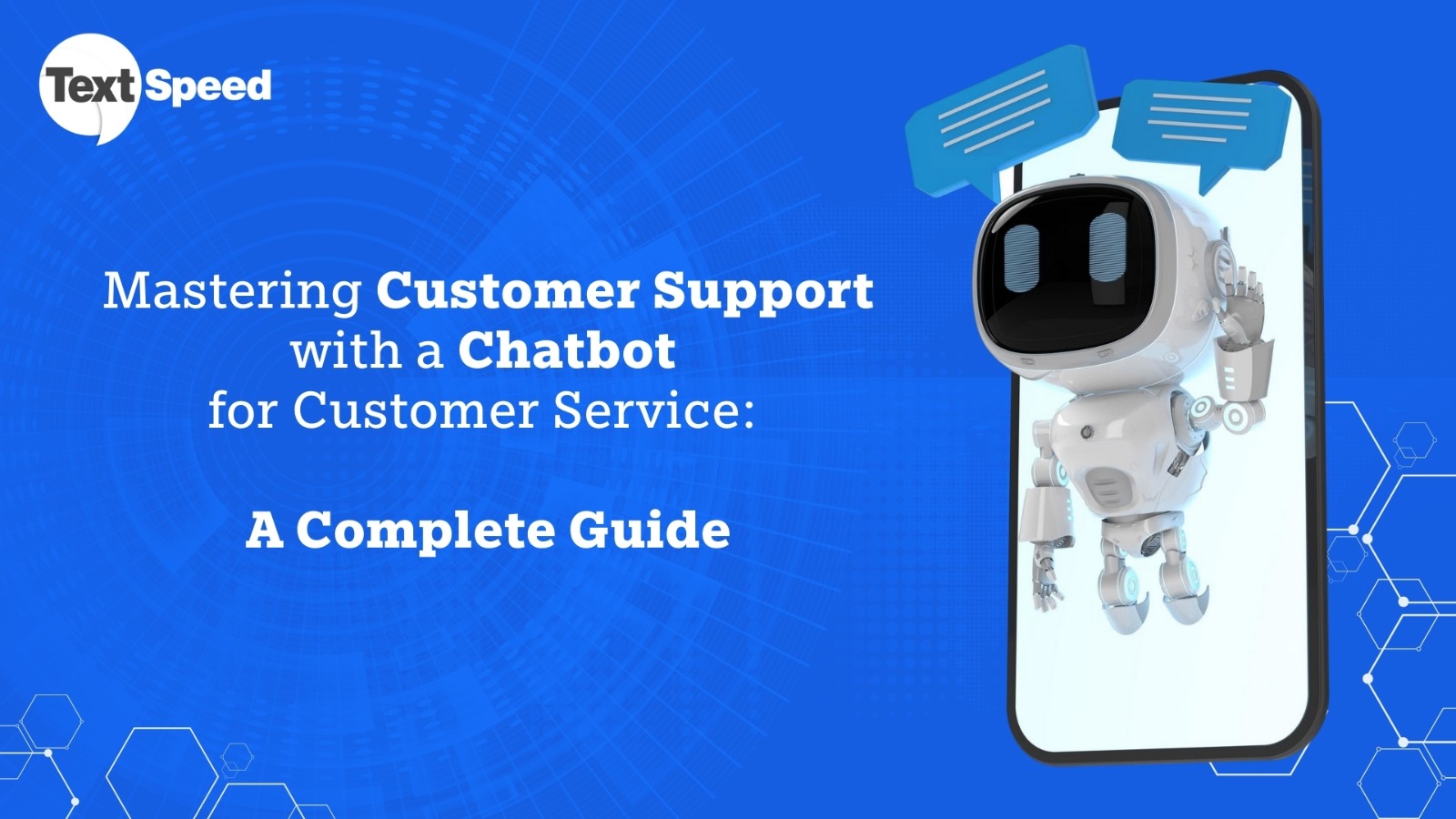Introduction
In today’s competitive digital world, providing fast, consistent, and personalized support is not just a value-add—it’s a necessity. Businesses across sectors are adopting AI-powered solutions to enhance the quality and speed of support services. At the forefront of this transformation is the chatbot for customer service, a tool that is reshaping the way companies interact with their customers.
In this complete guide, Textspeed breaks down how businesses can harness the power of chatbots to deliver exceptional customer service—from understanding the core benefits to implementing effective strategies and best practices.
What Is a Chatbot for Customer Service?
A chatbot for customer service is an AI-powered tool that automates customer interactions through text or voice-based interfaces. Integrated into websites, apps, or messaging platforms, these bots simulate human conversation to assist users with queries, troubleshoot problems, and even complete transactions—without the need for live agents.
Why Use a Chatbot for Customer Service?
Here’s why modern businesses, including Textspeed clients, rely on chatbots:
-
24/7 Support Availability
Chatbots operate around the clock, ensuring no customer is left waiting, even during non-working hours.
-
Faster Query Resolution
Customers get immediate responses for FAQs, order tracking, and basic troubleshooting.
-
High Scalability
Chatbots can handle hundreds of conversations simultaneously—ideal for peak periods.
-
Cost-Efficiency
Reduces the dependency on large support teams, cutting operational costs.
-
Consistent Service Quality
Unlike humans, bots don’t get tired or make errors due to fatigue.
-
Personalized Experiences
Integrated with CRM, they tailor responses based on previous interactions.
Key Benefits of Using a Chatbot for Customer Service
Improved Customer Satisfaction
Quick and accurate responses keep customers happy and engaged.
Increased Agent Productivity
Bots handle routine tasks, freeing human agents to tackle complex issues.
Reduced Wait Times
Customers receive instant attention without waiting in queues.
Omnichannel Presence
Chatbots on websites, WhatsApp, Facebook Messenger, and apps provide seamless multichannel support.
Data-Driven Insights
Chatbots collect valuable user data, helping brands like Textspeed refine support strategies.
How to Improve Customer Support with Chatbots
1. Use Natural Language Processing (NLP)
To ensure that your chatbot understands user intent and tone, integrate advanced NLP. This makes interactions feel more natural and human-like.
2. Train with Machine Learning (ML)
Feed your chatbot historical conversations and customer feedback to enhance its learning. The more it learns, the better it responds.
3. Personalize Interactions
Integrate your chatbot for customer service with CRM tools to greet users by name, recall past issues, and offer tailored suggestions—boosting loyalty.
4. Set Clear Escalation Paths
When a chatbot encounters complex queries, it should smoothly transfer the issue to a human agent, maintaining context for a seamless transition.
5. Provide Omnichannel Support
Ensure the chatbot is available across your digital touchpoints—your website, mobile app, social media, and WhatsApp.
Best Practices for Implementing a Chatbot for Customer Service
Start Small and Scale Gradually
Begin with basic queries (FAQs, order tracking). Expand functionality based on user needs and chatbot performance.
Define the Bot’s Personality
Give your chatbot a consistent tone of voice that aligns with your brand. Whether it’s professional or friendly, consistency builds trust.
Keep the Language Simple
Use clear, jargon-free communication. The goal is to make support accessible and user-friendly.
Monitor KPIs
Track response time, resolution rate, user satisfaction, and chat completion rate to identify improvement areas.
Prioritize Data Security
Ensure encryption, authentication, and compliance with data privacy laws like GDPR when handling customer information.
Test Before Going Live
Simulate real user scenarios to ensure the chatbot delivers correct answers and handles unexpected inputs gracefully.
Use Cases of Chatbots in Customer Support
-
E-commerce: Order status, return policies, cart recovery
-
Healthcare: Appointment booking, symptom checking
-
Banking: Balance inquiry, fraud alerts
-
Education: Admission queries, course suggestions
-
Travel: Booking confirmations, itinerary management
Textspeed’s Approach to Chatbots for Customer Service
At Textspeed, we specialize in building and integrating intelligent chatbot systems tailored to your business needs. From WhatsApp chatbots to multi-platform AI support systems, we ensure:
-
Seamless customer engagement
-
Personalized conversation flow
-
Reliable human handover processes
-
In-depth analytics and reporting
Our chatbot for customer service solutions are already helping businesses in Chennai, Mumbai, Delhi, and beyond to streamline support and enhance customer loyalty.
Future of Chatbots in Customer Support
With advancements in AI and conversational design, chatbots will soon handle not only reactive support but also proactive engagement—reminding users about renewals, collecting feedback, and offering suggestions. Voice-enabled chatbots, emotional AI, and multilingual support are also shaping the future of automated customer service.
Conclusion
A well-designed chatbot for customer service offers businesses a scalable, cost-effective, and customer-friendly support solution. By following the right strategies and working with expert providers like Textspeed, your business can stay ahead of the curve, deliver exceptional service, and build lasting customer relationships.
Ready to transform your support experience?
Contact Textspeed today for a customized chatbot solution that drives results.


